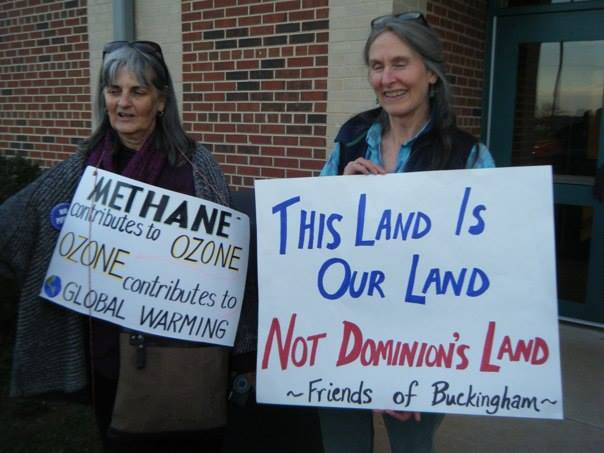( – promoted by lowkell)
 Free Nelson has been reporting on errors, accidents and violations by Dominion and/or its partnerships over the last several months. We became interested in Dominion’s safety record last May, when Nelsonians began receiving letters regarding a 554-mile long, 42″ natural gas pipeline known then as the Southern Reliability Project. The pipeline has since been renamed the Atlantic Coast Pipeline (ACP), and is now a partnership between Dominion, Duke, Piedmont Natural Gas and AGL Resources.
Free Nelson has been reporting on errors, accidents and violations by Dominion and/or its partnerships over the last several months. We became interested in Dominion’s safety record last May, when Nelsonians began receiving letters regarding a 554-mile long, 42″ natural gas pipeline known then as the Southern Reliability Project. The pipeline has since been renamed the Atlantic Coast Pipeline (ACP), and is now a partnership between Dominion, Duke, Piedmont Natural Gas and AGL Resources.
The proposed ACP would cut a 125′ swath, wide enough for a 6-lane highway, through Nelson’s steep, forested terrain, as well through our rolling farmland. The originally-proposed route for Nelson is approximately 30 miles, entering at the county’s northeast corner near Humpback Rock on the Blue Ridge Parkway. It would travel in a southeasterly direction to the James River. This route, or any of the other four recently announced alternate routes through the county, would traverse the land of hundreds of private property owners.
We have heard all the platitudes. The most often heard is that “pipelines are the safest way to transport natural gas.” Actually, it is the only way natural gas is transported. But that doesn’t mean it is safe. As pipelines increase in size, it becomes more imperative that we know the risks to those in the path of these behemoths. In 2012, a 20″ natural gas pipeline exploded in Sissonville, WV along Interstate 77, melting 800′ of the interstate highway, destroying three homes and damaging countless others. Another pipeline, in Appomattox County, Virginia, exploded in 2008, destroying two homes, melting the siding on over 100 others as far as a mile away. Clearly, the radiational heat from these explosions is tremendous. Yet here in Nelson, Dominion (which has chosen the proposed path) puts existing lawndowners’ homes within 330′ of a much larger, 42″ pipeline which operates at a much higher 1,440 psi than the two pipeline explosions we gave as examples.
We won’t address Dominion’s many lies, nor the crass, bullying behavior of Dominion toward landowners and our community in this article. But we will share with you the many errors, unreported violations, fines and accidents Dominion and its partnerships have been party to over the last few years.
ERRORS
Many of the errors Dominion has made have been clerical, mundane ones. Errors which most would not expect from a multi-billion dollar corporation with thousands of employees, lobbyists, lawyers, and politicians in their pockets. For example, last September, Dominion made a minor change to the route through Nelson, moving the proposed route off several smaller parcels onto a neighboring farm. We were there and heard Board of Supervisor member, Allen Hale, along with the landowner of the farm, explain the benefits to Dominion in moving the route a few hundred feet. Dominion forgot to change the maps.
In December, the ACP, LLC began filing lawsuits against landowners in Nelson who had refused Dominion access to their property for survey. A total of over 60 suits were filed, including the Sheriff of Nelson County and his wife, David and Sherri Brooks. We posted about that suit here on BV, and many other media outlets soon followed that story.
In mid-January Dominion held its second Open House in Nelson. Free Nelson believes that this is when Dominion realized its error, as we saw Supervisor Hale and the same landowner standing over the maps at that meeting. Shortly after that Open House, Dominion issued a statement saying it had erroneously sued 14 Nelson landowners, and it couldn’t understand how the maps hadn’t been updated. The following day, Dominion issued a second press release saying it had made another error. It had only sued three landowners erroneously, not 14, as it had originally claimed.
Other clerical errors include Dominion and the ACP, LLC sending letters without the 15-day notification required in the Wagner Act, which purports to allow survey without permission. Of course, Dominion and the ACP, LLC apologize when these errors are brought to their attention.
Another error involves those original letters sent to landowners along the proposed path through Nelson requesting permission to survey, as well as a second letter required under the statute which we call “the intent to enter” letter. These letters were from Dominion Transmission (DTI). Though in December, when lawsuits were filed, the suits were filed not by DTI, but by a Delaware limited liability corporation called the ACP, LLÇ. When the first demurrer was filed in late January in these lawsuits, among other items, it questioned whether the ACP, LLC had standing to file the suits, since it had never requested permission or sent letters of intent to enter private property to survey. After that demurrer was filed, we are unaware of any additional suits being filed against landowners who had refused survey.
This week, we found out that in a case in Suffolk County where a landowner had been sued by ACP, LLC, Dominion and its lawyers had erred once again. Judge C.E.Eason dismissed the ACP, LLC’s suit saying the ACP, LLC had no right of entry because it had not requested it, nor could DTI transfer its rights to the ACP, LLC.
What do these errors tell us about Dominion? They certainly show a pattern of Dominion’s inability to do mundane, clerical tasks correctly. It may also show that Dominion believes they are so powerful that they simply have an indifference towards the people they refer to as stakeholders. Do they believe they have enough politicians in their pockets that they don’t need to follow the very law they helped create?
VIOLATIONS, FINES and LAWSUITS
We don’t believe this list to be all encompassing, because it is difficult to track all of Dominion’s many subsidiaries and partnerships. The first is a lawsuit filed by CPM Virginia, owners of the Battlefield Golf Club, which has sued Dominion, accusing it of using toxic coal ash to build the fairways and greens at the Club.
The second, DTI built an 8″ 60-mile long natural gas liquids pipeline, known as the G-150, in 2012 in West Virginia. The West Virginia Department of Environmental Protection (WV DEP) issued a total of 13 violations against DTI, six of which involved the G-150. Seven violations in Doddridge and Ohio Counties occurred along two other DTI pipelines. Most of the violations involved soil-slips and rights-of-way failures. These failures resulted in sedimentation erosions and run-off into 12 different waterways and streams. One violation was for failure to report a pipeline break. This violation resulted in crude oil and “produced water” leaking into Dry Fork.
An article in the Pocahontas Times quotes the WV DEP as stating, “Dominion was not forthcoming with pipeline project and incident information.” Inspectors issued notices of violations in June 2013 to DTI, and it agreed to supply information to the WV DEP. However, the WV DEP had to make additional requests of DTI in October and December 2013. Finally, DTI supplied partial and incomplete information in January 2014. In October 2014, under a consent order, DTI was fined a paltry $55,000. Dominion’s Jim Norvelle issued a statement at the time including, “Dominion works hard to comply with all environmental rules and regulations.” Free Nelson believes Dominion’s actions belie Norvelle’s remarks.
Early this month, Dominion was fined $365,000 for unreported emission violations of over 100 pounds of ammonia being emitted 27 different times at its Cove Point LNG export facility in Lusby, Maryland. The violations occurred between December 2012 and February 2013. Though required to report the violations to the EPA and local emergency services, the public was not made aware of the violations until the EPA fined Dominion this month. Dominion claims it “delayed” reporting the 27 incidences of releasing at least 100 pounds of ammonia into the air because it was completing “careful calculations” to confirm the emission violations actually occurred.
ACCIDENTS
Dominion East Ohio, a Dominion subsidiary, had an 8″ pipeline rupture creating a 10′ crater in New Franklin, OH on July 22, 2013. Gas was escaping into the air, but luckily did not ignite. Because there were no injuries or property damage, this was not a reportable incident.
Dominion East had a second gas leak, at Spring Lakes Campground, which required the evacuation of 170 people and resulted in 200 gallons of an “oily” substance leaking into the lake on the property. The hole in the line was about the size of a nickel and was repaired with a clamp. The line is the primary natural gas supply line to the New Philadelphia area. Again, this was not a reportable incident.
Dominion and Caimen Energy are in a partnership known as Blue Racer. During the summer of 2013, Blue Racer opened a liquid natural gas gathering, fractionation and processing plant along the Ohio River in Natrium, WV. Within a few short months, on September 21, 2013, an explosion and resulting fire occurred at the plant which required the evacuation of 25 nearby neigbors. This video shows the resultant fire from that explosion.
The plant was not reopened until January 2014. On October 28, 2014, an 8″ natural gas condensate line for the very same Blue Racer plant exploded in Monroe County, OH. The Intelligencer reported, “The plant is across the Ohio River in Natrium, but underground pipelines allow it to make connections in the Buckeye State.” Six fire departments responded to the blaze, which burned several acres of forest land.
An additional incident occurred in connection with Dominion’s Blue Racer partnership, on November 12, 2014 where sadly an electrical contractor, Norman Butler, from Newport News, VA was killed in an explosion and fire while working on a Blue Racer condensate line in Noble County, OH
Governor McAuliffe said yesterday, “Some people act like this is the first pipeline that has been built.” Free Nelson and the residents of our community know full well that this isn’t the first pipeline ever built. But we have done our research and we don’t believe Governor McAuliffe has. In addition, we know that in addition to Dominion’s activities outlined here, there were five pipeline ruptures and explosions in the United States during January 2015. Admittedly, none of those five had anything to do with Dominion, but the industry’s track record isn’t what officials would like us to believe.
None of the incidents in our report include a pipeline anywhere near the size of the proposed Atlantic Coast Pipeline. Obviously, Dominion’s incidents didn’t include homes within 300 feet of those explosions, but the path of the proposed ACP does. We question Dominion’s commitment to our environmental regulations based on their actions. We question their ability to build this pipeline based on their track record building gas infrastructure like the G-150 and the Blue Racer plant. Finally, if Dominion can’t get the small things right, like mailing letters which include correct notification, or sue the right people, how can anyone believe Dominion has the ability to build this pipeline safely?
There’s a little town near Dominion’s Blue Racer plant called Kent. After the explosion at the plant, Delbert Wade reportedly said this: “We don’t feel safe. We are a relaxed community and we’ve lived here for 50 years and it’s been home to us. We are afraid to go to bed at night….Our safety doesn’t seem to be their concern.” We empathize with Mr. Wade, and don’t want to be walking in his shoes.



 Sign up for the Blue Virginia weekly newsletter
Sign up for the Blue Virginia weekly newsletter








